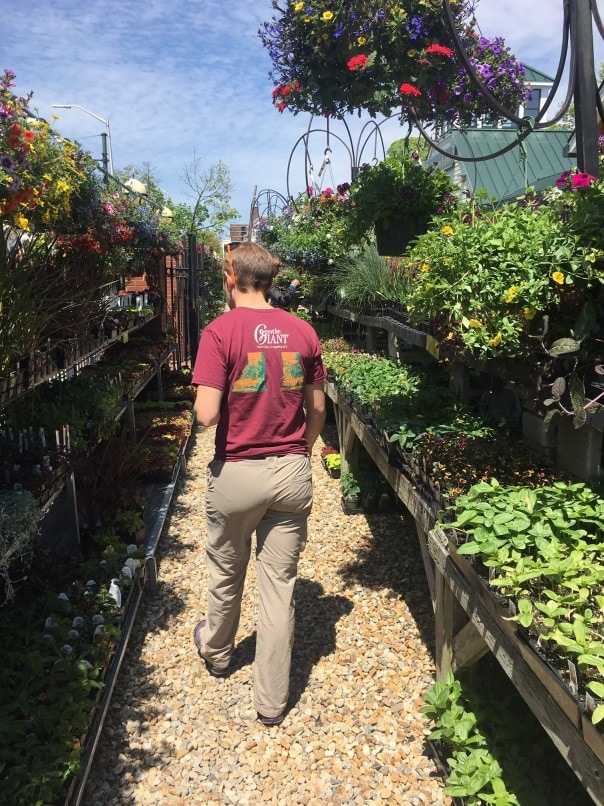
Calling all plant parents! If you are anticipating a local or long-distance move and you are worried about what this will mean for your plants, fear not. The team at Gentle Giant have compiled a guide on how to move with your precious plants. From small to tall plants, local to long-distance moves, we have tips on how to best prepare your plants to endure the various stages of the moving process.
Pre-Move Plant “Must Knows”
Know the Rules
As you plan your move it is important to be aware of regulations on moving plants. The US Department of Agriculture may require inspections of certain plant materials due to pest controls and local bans on particular plant species. The rules vary from state to state, and country to country so be sure to research the regulations associated with your destination. If you require a plant inspection by a local agricultural department, you should schedule an appointment with an authorized official in advance of your relocation.
Pot, Prune, and Water
In the lead up to moving day it is important to condition your plants so that they are prepared for the journey and their new home.
Pot: About three weeks before you move you should re-pot your plants into shatterproof containers of the same size. Switching from ceramic pots to a shatterproof plastic will reduce the risk of pots being broken during transportation. WindowBox offers shatterproof, self-watering containers ideal for long journeys.
Prune: Approximately one week before moving day it is important to prune your plants. This involves removing dead or overgrown branches, or stems from the plant using pruning shears and kitchen scissors. A kitchen scissors is adequate for slender branches, while pruning shears are recommended for thicker ones. Once dead leaves and stems have been clipped, you should deadhead the plant. This involves removing spent flowers by ‘clipping them back as close to the stem as possible.’
Water: Your plants should be watered two days before moving day. It is important to ensure that the soil is moist but not wet for the move. As such, take extra care not to overwater. Too much water can cause the plants to freeze in cold weather or encourage fungus growth in warmer conditions.
During the Move
Packing your Plants
How you pack your plants will largely depend on whether you are having movers transport them, or moving them yourself. Oftentimes moving companies and plants do not mix. Like many moving companies, Gentle Giant do not transport plants as they are very temperamental to climate change and their health cannot be guaranteed.
Small Plants: For smaller plants try wrapping the container only and taping cardboard over the soil so that it does not spill over during the journey. Containers should then be packed compactly in a well-taped, sturdy box, using packing paper or newspaper to fill any gaps. If possible, leave the lid off to ensure the plants can breathe. Where boxes must be covered, poke holes into the top of the box for airflow. Once the plants have been placed in the appropriate box and labelled, they should be packed last and placed on top of other boxes. During the drive, give your plants some A/C to counteract warm weather or heat to negate cold weather. Be cautious not to overheat or cool the car too much as this could promote the growth of fungus, or freeze the soil respectively.
If your moving company agrees to transport your plants it may be worthwhile padding the tops of delicate plants with shredded newspaper or tissue for the trip. Boxes should be labelled with ‘fragile’, ‘live plant’, and ‘This End Up’ stickers to ensure movers handle your plants with care. Alternatively, shipping is a good option for transporting smaller, stronger plants. SPS, UPS, and FedEx all offer shipping services. To prepare your plants for shipping they should be removed from their pots, their roots wrapped in a wet towel and again with a plastic covering fastened with tape or a rubber band. Plants should be placed in padded boxes using ample newspaper and bubble wrap and labelled clearly before shipping.
Larger Plants: Similar to small plants, wrap the pots, and pack them in a box compactly. It is important to note that taller plants can end up tilted during the journey, meaning you will want to replant them once they’re settled in their new home. For plants with long branches and stems, try binding these sprawling parts together with twine to keep them compact for transit.
Post-Move Plant Placement
Unpack your plants first so that they are returned to their previous living conditions as soon as possible. When repotting the plants they should be placed in pots that are the same size as the ones before you moved in. Once repotted, wait to move your plants until they become accustomed to their new environment. Moving the plants before they have stabilized can cause breakage. In cases where your plant suffers from ‘transplant shock’, give it a couple of days to recover. However, if your plant continues to worsen, sites like Miraclegro and Instagram influencers like the @houseplantjournal offer high-quality plant parenting advice.
Are you planning a local or long-distance move? Hire professional movers like Gentle Giant to take away the stress of the move! Check out our moving checklist for further information on how to prepare for your move and use our free move estimate tool to determine the cost of your move. Additionally, you can view our locations and the various moving services we offer including packing, storage, piano moving, and more here.

